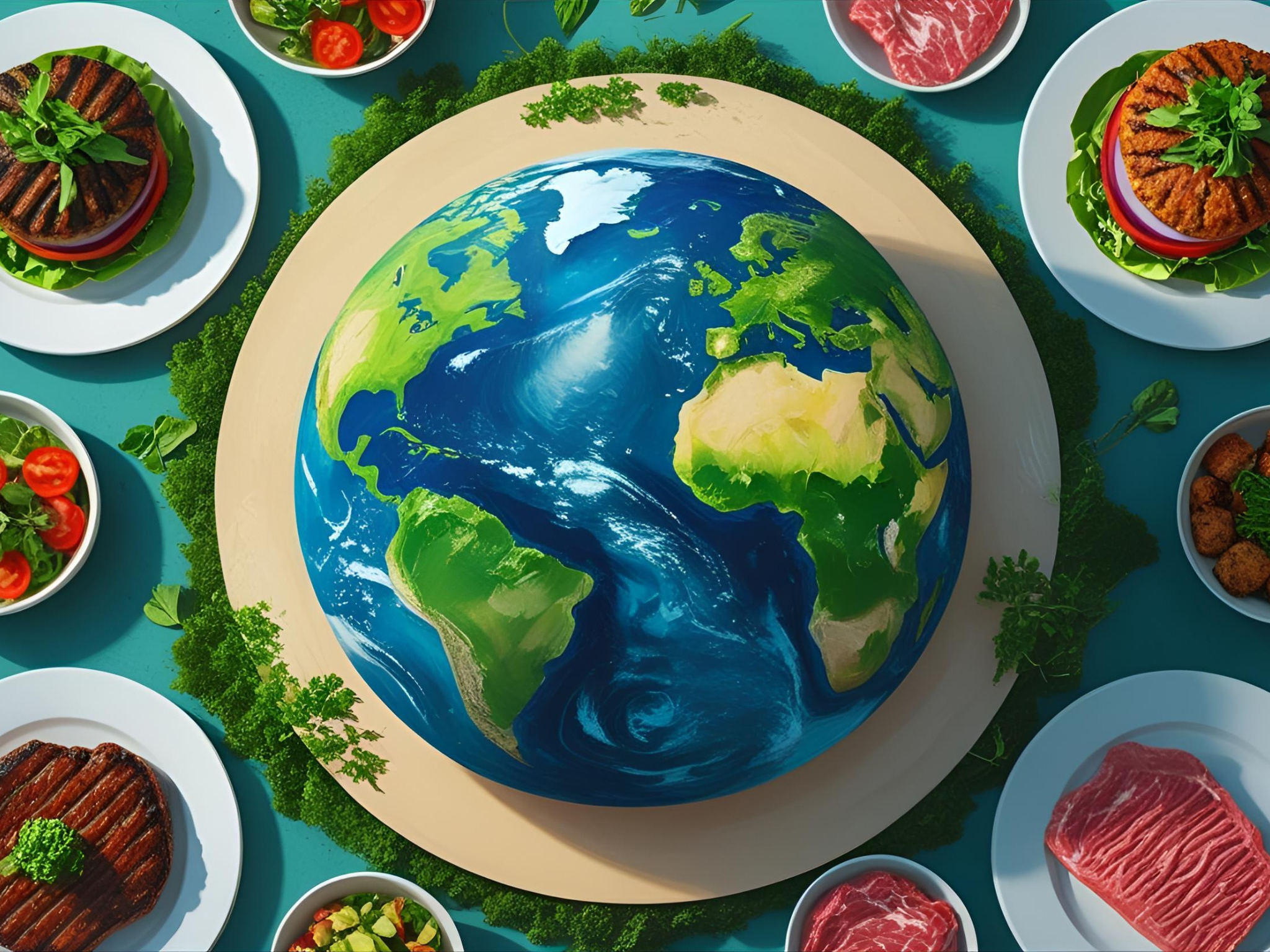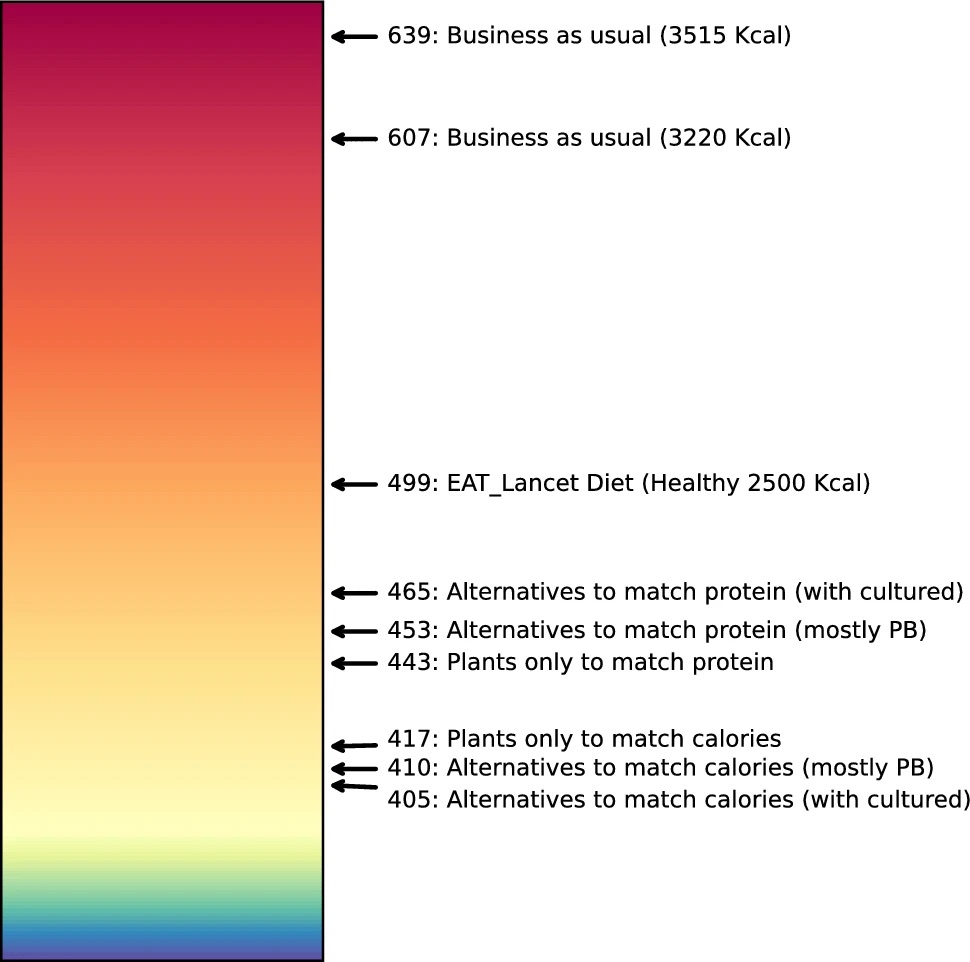
Fully replacing animal proteins with alternative sources by 2050 is now the only way to keep the food system from eating up its carbon budget, a new study has found.
With our calorie and protein demand growing, the global food system must rapidly transition from meat and dairy to low-carbon alternatives if it is to keep within its climate limits.
A study published in the Scientific Reports journal suggests that, as things stand, rising population numbers and incomes will lead to a further increase in animal protein demand, and limiting climate change to global targets would not be possible without a fast and significant reduction of these foods.
Pace, the researchers suggest, is of the essence. “The longer the delay before the transition begins, the larger the share of animal-source foods that needs to be replaced by 2050 for the same target cumulative emissions,” they write.
Livestock farming accounts for up to a fifth of global emissions, and nearly 60% of the food system’s climate footprint. In fact, when using updated GHG metrics, animal agriculture has been found to be the leading cause of climate change.
The alternatives proposed by the study include plant-based, fermentation-derived and cultivated proteins, which have a fraction of the climate, water and land use footprint of animal proteins when produced with renewable energy.
Current consumption trends suggest that the world’s calorie demand will increase by 24% by 2050, and the share of meat, dairy, eggs and seafood will nearly double (going from 15.6% to a quarter of the total). This, however, will result in a doubling of annual food system emissions between 2020 and 2050, driven almost entirely by animal proteins.

Only a full shift away from meat will meet climate goals
While many such studies focus on the 1.5°C emissions goal, this one looked at the more realistic target of keeping post-industrial temperature rises under 2°C, given the “limited progress on emission mitigation”. That makes its findings even starker.
The food system accounts for a third of global emissions. According to the IPCC’s estimates, that leaves it with a carbon budget of 390 gigatonnes, which the researchers allocated to 2050. However, under a business-as-usual scenario, the sector’s emissions will instead reach up to 639 gigatonnes of CO2e in this period.
The study compared different mitigation pathways and found that the food system can only reach its climate goals if 60% of animal proteins are replaced with alternatives by 2050, with the transition starting in 2023. Since that hasn’t happened, this would now need to be a 100% switch if the rapid transition begins in 2026.
This scenario would mean only plant-based meat, dairy and eggs being adopted through to 2032 before fermentation-derived and cell-cultured ingredients enter the mainstream to make up 27% of all alternatives by mid-century.
The study found that swapping calories from animal proteins for these alternatives could reduce emissions by 33%, an impact that is in line with other proposed emission reduction strategies, like shifts in cattle production areas, animal feed changes, land restoration, yield improvements, and reducing food waste.
While a combination of these approaches will yield the greatest impact, none of them has as much potential as a rapid switch to plant-based, microbial and cell-cultured foods. “Alternatives to animal-source foods are likely the most promising path to food system sustainability,” the researchers write.

Alternative proteins should receive the same policy support as green energy
Strikingly, the researchers suggest that their estimated emission cuts are conservative because they did not account for three other environmental impacts: land use and degradation, water depletion and pollution, and biodiversity loss.
“These costs can lead to even more immediate negative effects than GHG emissions, thus underscoring the need for [a] rapid shift away from animal-source foods. They arise due to the ultimate inefficiency of the animal production technology for energy conversion,” they write.
That inefficiency also has a social cost. The high share of animal products in the diets of affluent countries increases the demand for feed crops like soy and corn, which will likely raise their prices globally and make them less accessible to low-income consumers.
The study notes that there has been a resistance to reducing animal protein consumption and an upward trend in their intake. But the transition needs to be fast, underscoring the potential importance of novel foods like cultivated meat and precision-fermented dairy.
It points to some key barriers, including taste and price parity. Delays in matching the attributes of animal proteins and an ultimately limited replacement share will “reduce the impact substantially”. It’s why innovation needs to be rapid and supported by a “strong regulatory environment and investment from both the private and public sectors”.

The shift towards animal protein alternatives is “unlikely to begin soon enough without intervention”, the authors note. They cite the energy transition as the framework for dietary change, with similar policies necessary for the rapid adoption of low-carbon alternatives.
“Now that the pace of adoption of electric vehicles and solar panel generation is exceeding forecasts, policy interventions to help jump-start the transition away from animal-source foods are likely to be highly impactful for reaching climate goals,” they write.
“Such interventions could include both supply-side incentives, such as research grants and R&D subsidies for quality improvement and subsidised loans to enable rapid scaling that meets growing demand; and demand-side measures, such as incentives for food companies, retailers, and the foodservice industry to reduce their climate impact.”
The post This is the Only Way the Food System Will Meet Its Climate Goals appeared first on Green Queen.
This post was originally published on Green Queen.